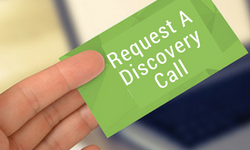
Wearable technology—now typically referred to as “wearables”—was once just reserved for medical use. Think hearing aids or continuous glucose monitors for people with diabetes. Nowadays wearables are kicking butt and making all of our lives better. They’ve expanded to—and been embraced by—the general population, and they’re only becoming even more advanced. The ability to provide real feedback, access to data, or enhance our existence moment to moment are powerful tools.
Wearable Technology Is Making Our Lives Better
Wearables have been around for a while. Remember the OG Fitbits? Fitness trackers such as Fitbits were one of the first wearable technologies to really catch on with the average consumer. Over time, the small wristband has evolved to include larger, watch-like screens and Bluetooth. For instance, now the Apple Watch Series 7 is so advanced that it can track your physical movement, measure your blood oxygen levels or heart rate, note your sleep patterns, and even call emergency services if you fall and can’t get up. Though this and other wearables aren’t designed to replace medical care, we can harness them to help us live a healthier lifestyle and also assist us in times of crisis.
Another reason why, perhaps, wearables are growing in popularity is that they don’t all look so techie anymore. Plus, as wearable technology evolves, it’s getting smaller and blending in more with everyday life.
- The Oura ring, for example, looks like a simple piece of jewelry, yet it can track your sleep, physical activity, heart rate, body temperature, even women’s menstrual cycles, and more. It then uses these factors to calculate your “readiness,” or how much your body is able to take on that day.
- Airpods—yes, Airpods are considered wearables—allow you to experience sound wirelessly in your day-to-day life. For some, that means a continuous stream of music or podcasts, but also Airpods allow you to easily answer calls and texts or directly communicate with and search the world around you without opening your phone or laptop.
- Wearables have also expanded into new categories. The RingPay, for example, is a form of contactless payment where your debit or credit card is linked to a ring you wear on your finger. Or, you can wear a bracelet that has your digital business card embedded in it. Simply touch your Linq bracelet to someone’s smartphone and your contact information, URLs to your business website, or social media accounts will be seamlessly transferred.
How Wearables Are Changing Our Lives
Rings, bracelets, and wireless headphones are all wearable technologies that are making our lives easier. But there’s also a growing market of wearables that are making our lives better. For example, glasses and headsets allow us to experience augmented reality (AR) and virtual reality (VR). Wearable technology now also allows you to incorporate scent technology, which makes your experience more immersive. And research has shown that the right scents not only have the power to greatly enhance your AR or VR experience, but also improve your mood, boost your focus, and enhance your memory.
So, rather than tracking specific health stats, these wearables augment your reality (via AR or VR) to give you a more immersive and holistic wellness practice. And just as smartphones and Airpods have become commonplace, soon VR headsets with scent wearables will too.




